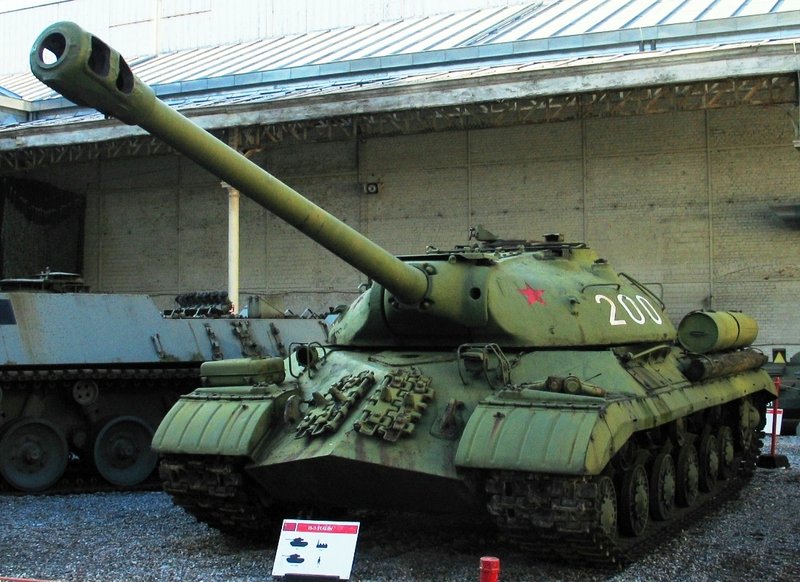You are not logged in.
Dear visitor, welcome to WesWorld. If this is your first visit here, please read the Help. It explains in detail how this page works. To use all features of this page, you should consider registering. Please use the registration form, to register here or read more information about the registration process. If you are already registered, please login here.
Quoted
*Angled plates run along the hypotenuse of a 45 degree triangle with the legs as a portion of the width and length of the tank.


This post has been edited 1 times, last edit by "Rooijen10" (Sep 20th 2013, 3:00am)


Quoted
To the best of my knowledge, no hollow-charge antitank weapons have been employed in combat, and certainly none by Italy. I wonder what experimental work Italy has done to determine that spaced armor adds to the protection of a vehicle from hollow-charge weaponry. And it the additional armor is intended to defeat more common weapons, would not the spacing defeat that? It strikes me as a concept well in advance of its time.
Quoted
Could provide a sketch of what this is supposed to represent? I am unable to imagine what you are describing, and therefore cannot properly comment on this aspect of the design.
Quoted
This design does seem to be in sharp contrast with other Italian tank designs which emphasize mobility. This vehicle has a power/weight ratio towards the lower end of the spectrum which will decrease its value in anything short of a set piece frontal assault. A vehicle of this size cannot be manufactured in infinite numbers, and supporting advancing infantry could be achieved by far less expensive vehicles. If they are expected to breakthrough an enemy's defenses unsupported... well, Iron Coffins would be a good descriptor - a tank is not going to achieve any sort of breakthrough on its on against any sort of prepared defense. JMHO.
Quoted
Front Upper Plate: 110mm @ 30 & 2x20mm Spaced plates
Front Lower Plate: 90mm @ 20 & 1x20mm Spaced plate
Front Upper Angled Plate*: 110mm @ 30 & 2x20mm Spaced plates
Front Lower Angled Plate*: 90mm @15 & 1x20mm Spaced plate
This post has been edited 1 times, last edit by "BruceDuncan" (Sep 20th 2013, 5:23pm)
Quoted
Originally posted by snip
More in-depth reply to Bruce.
When I refere to "weapons fire above the calibers of more portable Ant-Tank weapons" I am not referring to HEAT or HESH rounds, but to larger anti-tank guns then could be reasonably considered man-portable that would be found in more static emplacements. Think something like the 88mm Flak guns. Italy has been testing a 57mm fin-stabilized HEAT round for man-portable AT duties (said weapon has been detailed elsewhere and is beginning a phased service entry in the latter half of 1944). But that is not the purpace of the spaced plates (but it may come in handy against HEAT depending on how precise the warheads are). The spaced plates as included are for two reasons. Altering the trajectory of an incoming shell so it strikes the main armor plate in such a way that its practical ability to penetrate armor is reduced and also to serve as an external spall liner that is easily repaired. Think of it like a de-capping plate on a warship. While it is not meant to defeat the rounds on its own, it plays an important roll in the overall protective scheme.

Quoted
An early method of disabling shaped charges developed during World War II was to apply thin skirt armor or meshwire at a distance around the hull and turret of the tank. The skirt or mesh armor (cage armor) triggers the RPG on contact and much of the molten jet that a shaped charge produces dissipates before coming into contact with the main armor of the vehicle.
This post has been edited 1 times, last edit by "Rooijen10" (Sep 20th 2013, 5:45pm)

This post has been edited 1 times, last edit by "BruceDuncan" (Sep 20th 2013, 6:29pm)
Quoted
Originally posted by BruceDuncan
The confusion, I think, comes from the following
Quoted
Front Upper Plate: 110mm @ 30 & 2x20mm Spaced plates
Front Lower Plate: 90mm @ 20 & 1x20mm Spaced plate
Front Upper Angled Plate*: 110mm @ 30 & 2x20mm Spaced plates
Front Lower Angled Plate*: 90mm @15 & 1x20mm Spaced plate
Based on the photographs you've chosen, I think you have duplicated the armor - you seem to be referring to the upper and lower glacis - the angled armor. Unless your design has hull armor that is upright - i.e. not sloped - I do not think that there is need for what seems a duplicate entry.

Quoted
Originally posted by Daidalos
I understand the thought behind the concept but I am not sure if it makes sense. I am no physics expert but I don't think that a 88mm+ kinetic round would care for a 20mm spaced armor plate.
Forum Software: Burning Board® Lite 2.1.2 pl 1, developed by WoltLab® GmbH
